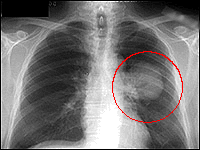Why is smoking harmful?
Tobacco smoke contains more than 60 cancer-causing chemicals (carcinogens), including polycyclic hydrocarbons, N-nitrosamines, aldehydes, and inorganic compounds. Twenty of the carcinogens cause cancer in the lungs and throat.[2] The most carcinogenic chemicals in tobacco are the nitrosamines. These are found in tobacco smoke, including second-hand smoke (environmental tobacco smoke), and chewing tobacco. The chemicals cause irritation and inflammation that gradually damage the cells of the mouth, nose, throat, and lungs causing them to become cancerous.
Tobacco smoke contains more than 60 cancer-causing chemicals (carcinogens), including polycyclic hydrocarbons, N-nitrosamines, aldehydes, and inorganic compounds. Twenty of the carcinogens cause cancer in the lungs and throat.[2] The most carcinogenic chemicals in tobacco are the nitrosamines. These are found in tobacco smoke, including second-hand smoke (environmental tobacco smoke), and chewing tobacco. The chemicals cause irritation and inflammation that gradually damage the cells of the mouth, nose, throat, and lungs causing them to become cancerous.
 |
| X-Ray of lung cancer. The white mass in the red circle is a lung tumor |
 Oral Cancer |
SMOKELESS TOBACCO or CHEWING TOBACCO:
An average size dip or chew of tobacco held in the mouth for 30 minutes provides as much nicotine as about 3 cigarettes. This makes smokeless tobacco highly addictive. Even though there is no smoke, tobacco held between the cheeks and gums releases chemicals that cause changes in the oral mucous tissues in as little as seven days. As the tissues of the mouth degenerate under the influence of the harmful chemicals, precancerous white or red patches (leukoplakias or erythroplakias) may develop.
An average size dip or chew of tobacco held in the mouth for 30 minutes provides as much nicotine as about 3 cigarettes. This makes smokeless tobacco highly addictive. Even though there is no smoke, tobacco held between the cheeks and gums releases chemicals that cause changes in the oral mucous tissues in as little as seven days. As the tissues of the mouth degenerate under the influence of the harmful chemicals, precancerous white or red patches (leukoplakias or erythroplakias) may develop.
Oral cancer includes cancers of the mouth, parts of the throat, and pharynx or voice box. Oral cancer is very difficult to treat because both the cancer and the treatments make it impossible to eat a proper diet. Only half of those with the disease survive more than five years. About 30,000 new cases of oral cancer (mouth, oral cavity, and pharynx) are diagnosed every year, and more than 8,000 people die from mouth cancer every year.[3]
Smoking causes wrinkles and accelerates aging
The chemicals in the smoke of tobacco narrow the blood vessels in the outermost layers of the skin. The reduced blood flow depletes oxygen and important nutrients, such as vitamin A, and results in damage to the collagen and elastin fibers that give strength and elasticity to the skin. As a result, the skin starts to sag and wrinkle prematurely, accelerating the normal aging process. Smoking is associated with increased wrinkling and skin damage in other parts of the body, including the inner arms. Repeated exposure to the heat from burning cigarettes and the facial expressions made when smoking, such as pursing the lips and squinting the eyes to keep out smoke, may also contribute to wrinkles. The following photographs of identical twins, aged 52, shows the wrinkling caused by smoking. The twin on the right smoked approximately three cigarettes per day (52.5 packs per year), and her skin has a lot more wrinkles and more severe aging.[4]
The chemicals in the smoke of tobacco narrow the blood vessels in the outermost layers of the skin. The reduced blood flow depletes oxygen and important nutrients, such as vitamin A, and results in damage to the collagen and elastin fibers that give strength and elasticity to the skin. As a result, the skin starts to sag and wrinkle prematurely, accelerating the normal aging process. Smoking is associated with increased wrinkling and skin damage in other parts of the body, including the inner arms. Repeated exposure to the heat from burning cigarettes and the facial expressions made when smoking, such as pursing the lips and squinting the eyes to keep out smoke, may also contribute to wrinkles. The following photographs of identical twins, aged 52, shows the wrinkling caused by smoking. The twin on the right smoked approximately three cigarettes per day (52.5 packs per year), and her skin has a lot more wrinkles and more severe aging.[4]
 9:29 AM
9:29 AM
 kotesh
kotesh


